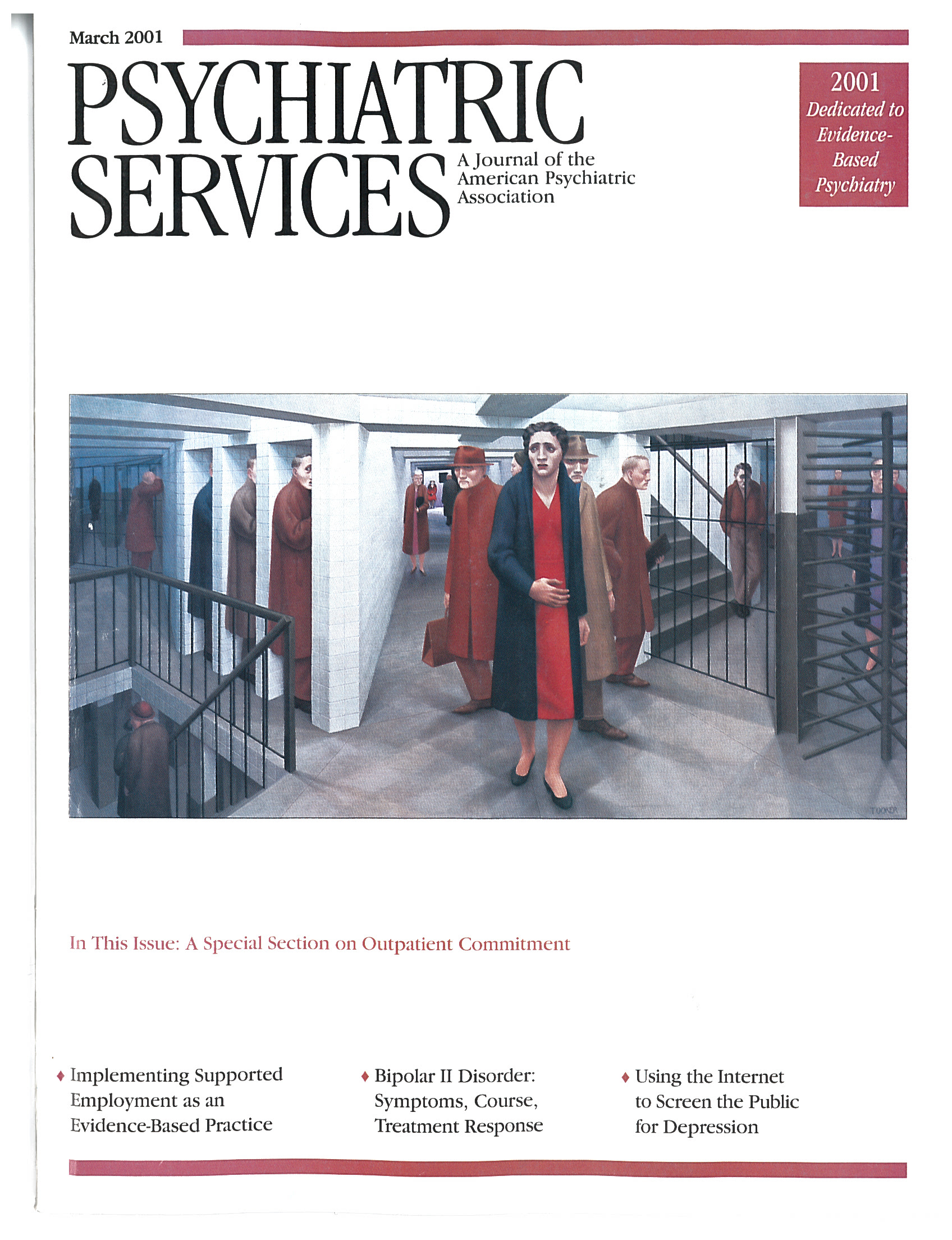Schizophrenia Is Not Contagious
A long-standing debate has been reinvigorated in response to public outcry over tragic acts by perpetrators who have a serious mental illness but who received little or no treatment. Calls for tougher commitment laws and the use of outpatient commitment have been featured in this and other professional journals and in the news media.
Although presumably well-intended, a coercive "quick fix" modeled on quarantine for tuberculosis, as suggested by Torrey and Miller (1), would overlook a half century of weakly funded and poorly planned efforts to serve persons with serious mental illness.
Proponents of confinement believe that compliance is central to minimizing the potential risk associated with treatment that is less restrictive; however, it is the patients who are almost universally held at fault when compliance is less than ideal. Little or no consideration is given to the connection between compliance and a physician's style of practice, the authority of the medical profession, the limits of the discipline, and patients' willingness to form an alliance with their physicians (2).
Insight is said to be a deciding factor in establishing voluntary treatment, yet at least one recent study found that it was not a precondition. Factors such as family interaction, access to the mental health system, and outreach also contribute (3). With so many variables affecting compliance on the supply side of the mental health system, any endorsement of a "predicted deterioration" standard appears draconian (4). If such a policy were applied in another context—police officers making "predicted DWI" arrests, for example—would there not be howls of protest? Yet with mental health consumers, police power is readily applied, largely because of scarcity of political allies for this population and because such measures can be used as a smoke screen for failed mental health policy.
Supporters of the "new paternalism" assert that benefits derived from medical treatment hold the highest value, overriding patient values (5). Consequently, we are in danger of reverting to "need for treatment" criteria, a standard that was widely abused. In such a paternalistic rendering of the medical model, informed consent is given scant attention, and the legal requirement that all risks of treatment be disclosed is often sacrificed to expediency (6).
Unfortunately, for every involuntarily committed client, many more individuals need mental health services but are stymied in their efforts to gain access to care. The post-deinstitutionalization mental health system has always been configured to confound; if the rats are lost in a maze, they won't cost anyone a dime. Managed behavioral health care is merely a hypomanic version of the access shifting that has gone on for a very long time.
In the debate over involuntary treatment, the fact that all 50 states have a legal mechanism to commit persons whose mental illness presents a danger to themselves or others is frequently overlooked. If the dangerousness standard is abandoned in favor of "predicted deterioration," mental health professionals will certainly have overstepped their bounds and transformed themselves into psychiatric marshals.
In the 1990s the ideal of the community mental health center was abandoned, sacrificed to the promised efficiencies of managed care. In a world of intractable stigma, stubbornly inequitable health insurance, and shrinking state mental health systems, psychiatry and allied mental health professions are poised to err once again by shirking advocacy for the expediency of locked units and medication orders backed by force.
The author is the mental health coordinator at the Missouri Department of Mental Health, 5400 Arsenal Street, St. Louis, Missouri 63139 (e-mail, [email protected]).
1. Torrey EF, Miller J: Can psychiatry learn from tuberculosis treatment? Psychiatric Services 50:1389, 1999Google Scholar
2. Trostle JA: Medical compliance as an ideology. Social Science in Medicine 27:1299-1308, 1988Crossref, Medline, Google Scholar
3. Cuffel BJ, Alford JA, Fischer EP, et al: Awareness of illness in schizophrenia and outpatient treatment compliance. Journal of Nervous and Mental Disease 184:653-659, 1996Crossref, Medline, Google Scholar
4. Slobogin C: Involuntary community treatment of people who are violent and mentally ill: a legal analysis. Hospital and Community Psychiatry 45:685-689, 1994Abstract, Google Scholar
5. Hermann DH: Autonomy, self determination, the right of involuntarily committed persons to refuse treatment, and the use of substituted judgment in medication decisions involving incompetent persons. International Journal of Law and Psychiatry 13:361-385, 1990Crossref, Medline, Google Scholar
6. Miller RD: Hidden agendas at the law-psychiatry interface. Journal of Psychiatry and the Law 18:35-58, 1990Google Scholar



